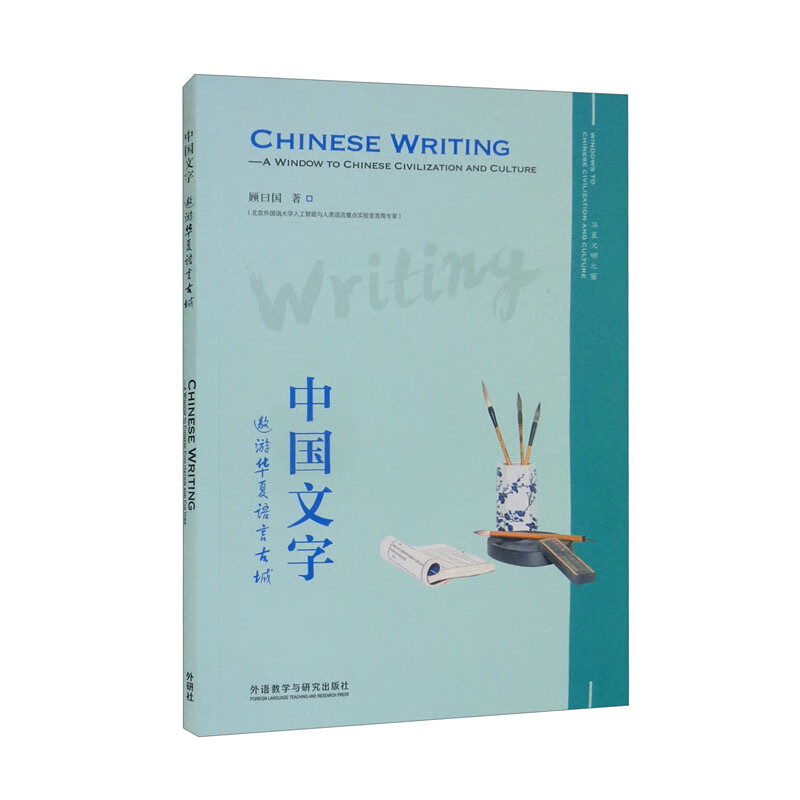
包邮中国文字:遨游华夏语言古城:a window to Chinese civilization and culture

- ISBN:9787521333015
- 装帧:一般胶版纸
- 册数:暂无
- 重量:暂无
- 开本:26cm
- 页数:158页
- 出版时间:2022-06-01
- 条形码:9787521333015 ; 978-7-5213-3301-5
内容简介
The English language has a shorter history as a means of widespread communication, perhaps only a few hundred years. Its pedigree is longer than that, though because it traces its roots as a Germanic language with many influences from Latin, classical Greek and French, all links that preceded it by hundreds of years. Because of historical circumstances, especially the quest of the British people for exploration and world trade from the 16th century on, and because of the Industrial Revolution of the 18th century, English has come to be the single most widely used language in the world today. Many people who do not use English as their first language find it is convenient to communicate with others through the use of English. Indeed, the person who can communicate in English has instant access to fellow human beings all over the world. As stated in this series, English has become "the matter-of-fact lingua franca." It is also the case that these days people all over the world have found new ways to communicate through language. This is so because of the blindingly fast advances in technology. We are able to see and hear each other instantaneously regardless of where we are in the geographic world. We can talk and laugh and share ideas quite easily through the Internet. It can store, examine, change and convey amazing amounts of information, all ofit created by human beings and intended for other human beings. Through this technology we can speak and revise our statements, we can make friends and inform others, we can express our ideas and learn new information much more quickly and with greater ease than has ever been possible in the past.
目录
Acknowledgements
Chapter 1 Introduction
1.1 An overview
1.2 The Spoken Word: The base of writing
1.3 Basic flow of ideas
1.4 Theoretical probing: The nature of Chinese characters
1.5 Limitations ofthe monograph
1.6 How to use the book
Part Ⅰ The Chinese Character: Theoretical Explorations
Chapter 2 The Chinese Language as a Multi-Dimensional City
2.1 Introduction
2.2 Wittgenstein's metaphors about language studies
2.3 The first primitive start of the Chinese language cityscape
2.4 Approaching the Chinese language as multi-dimensional modes of existence
2.5 The four-borne discourses: A demographic characterization
2.6 The four-borne discourses and categorization of idiolects
2.7 Recap
Chapter 3 Chinese Writing in the Ancient City of the Chinese Language and Civilization
3.1 Introduction
3.2 The Land-Borne Situated Discourse: Foundation and yardstick for writing
3.2.1 Situatedness of discourse
3.2.2 Human space-time movement and activity zone
3.2.3 Social Space-Time
3.2.4 Natural multimodality and total saturated experience
3.2.5 Sedimentation of discourse process
3.2.6 Accessibility and availability
3.3 WWBD,ABSD and WBSD: A contrastive study
3.3.1 The WWBD
3.3.2 The ABSD
3.3.3 The WBSD
3.4 The four-borne discourses: Maintenance, reproduction, and creativity
3.5 Literature review: Where does the present study stand?
3.5.1 Media studies
3.5.2 Media and a fundamental metaphor
3.5.3 Semiotic approach to media studies
3.5.4 The present study. Rethinking of "the extensions of man"
3.5.5 Discourse analysis and media
3.6 Final remarks
Chapter 4 The Written Word-Borne Discourse: An Ecological Model
4.1 Introduction
4.2 An ecological model
……
Part Ⅱ The Chinese Characterin Cross-Gultural Perspedive
作者简介
顾曰国,博士后,曾师从许国璋教授,现任中国社会科学院语言研究所研究员,当代语言学研究室主任,并在北京外国语大学兼职至今,主要研究领域包括语用学,话语分析,语料库语言学,修辞学和英语教育。
-

英文滑稽诗300首:英汉对照
¥12.3¥42.0 -

THE GREAT GATSBY-了不起的盖茨比
¥6.0¥16.8 -

你往何处去
¥12.2¥33.0 -

MADAME BOVARY-包法利夫人
¥10.9¥36.8 -

英语六级词汇背诵精典 高教版
¥25.2¥89.8 -

名著名译英汉对照读本马克.吐温短篇小说选
¥10.5¥28.0 -

夜莺与玫瑰-全2册
¥12.3¥29.8 -

小妇人(纯英文)/床头灯英语.3000词读物
¥6.4¥15.8 -

英诗选译-孙大雨译文集-(英汉对照)
¥13.2¥36.0 -

朗文袖珍英汉双解词典
¥18.1¥45.0 -

阿加莎·克里斯蒂经典侦探作品集(平装本)东方快车谋杀案(平装本)
¥14.1¥20.8 -

许渊冲英译:毛泽东诗词·英汉对照(经典珍藏版)(精装)
¥53.8¥88.0 -

包法利夫人(英汉对照)
¥11.4¥29.8 -

用美国幼儿园课本学英语(全3册)
¥37.7¥108.0 -

三曹诗选英译
¥14.3¥38.0 -

好快!10天背完3000英语单词
¥11.4¥29.8 -

圣经故事
¥24.4¥49.8 -

傲慢与偏见-英汉双语版
¥13.2¥38.0 -

新概念英语一课一练 1
¥13.2¥19.0 -

儿童文学 美国K-12原版语文课本--初中·上(全12册)
¥128.1¥298.0












